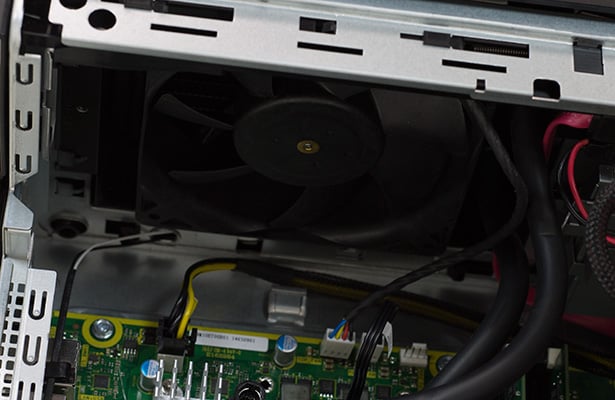Alienware Aurora R5 Review: Small Stature, Big Performance
AIDA64
Before throwing the Alienware Aurora R5 though our suite of benchmarks, we burned it in with AIDA64’s system stability test. AIDA64 is capable of thrashing every component of a system at once to see how it holds up under pressure. We take baseline readings and then let the burn-in run for several hours and check again to ensure all is working well.
Alienware Aurora R5 Idle


Alienware Aurora R5 Load
Temperatures
Our test room in this case maintained about a 23.5C ambient temperature throughout the test. For the average CPU temp we combined the individual core readings and for the GPU we monitored temperatures with the Alienware Thermal Control software. At idle the Aurora R5 registers an average CPU temp of 30.9C, GPU temp of 33C and a drive temp of 36.8C. After an hour the system averaged a CPU temperature of 59.6C, GPU temp of 70C, and a drive temp of 38.6C. Refer to the screenshot above for maximum temperatures and note the peak observed GPU temperature was 73C under load.While under load we also used an infrared thermometer to check temperatures around and inside the case. The front and side intake vents both read 24.5C and the top exhaust varied between 38C and 40C, while the GPU exhaust reached 46.3C. Inside, the side of the GPU’s PCB nearest the die measured 57.3C with its intake fan reading 39.2C. The power supply area kept a cool 27.2C. Parts of the motherboard read as high as 54.2C just behind the rear I/O (one of the capacitors) while the RAM ran at about 34.4C. In all, there isn’t much to worry about but you may want to exercise some caution if you opt for GPUs in SLI and make sure there is nothing obstructing the fans to maximize airflow.
Power
These days, a kickass gaming machine doesn't need to run up your power bill. The latest CPUs and GPUs have really put an emphasis on efficiency. We measure total system power consumption at the outlet and have aggregated the results for idle and full loads below.
The Aurora R5 clocks in as one of the most power friendly machines we've tested in recent years. Keep in mind the GTX 1080 is capable of equaling or even bettering a system with SLI'd GTX 980s and yet pulls less power from the wall than a system with a single GTX 980. The significantly less powerful GTX 970 test rig sips less power under load, but even it pulls nearly three times the wattage when idle. This is a monster that won't cause a heart attack when your power bill comes around each month.







